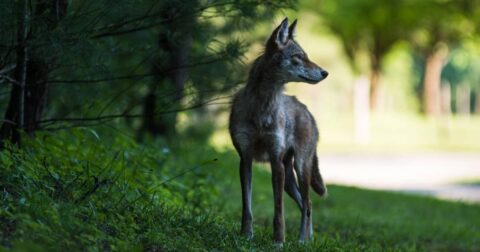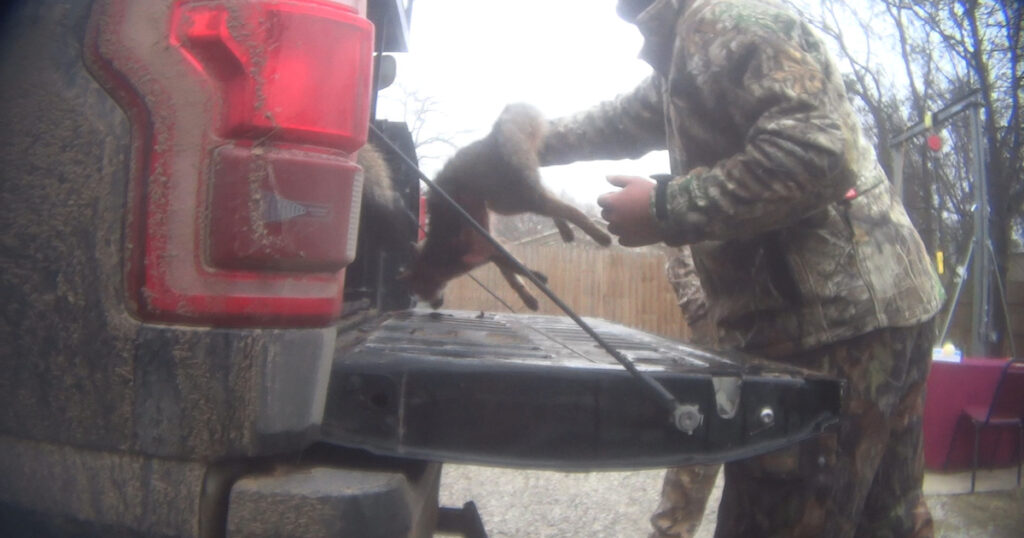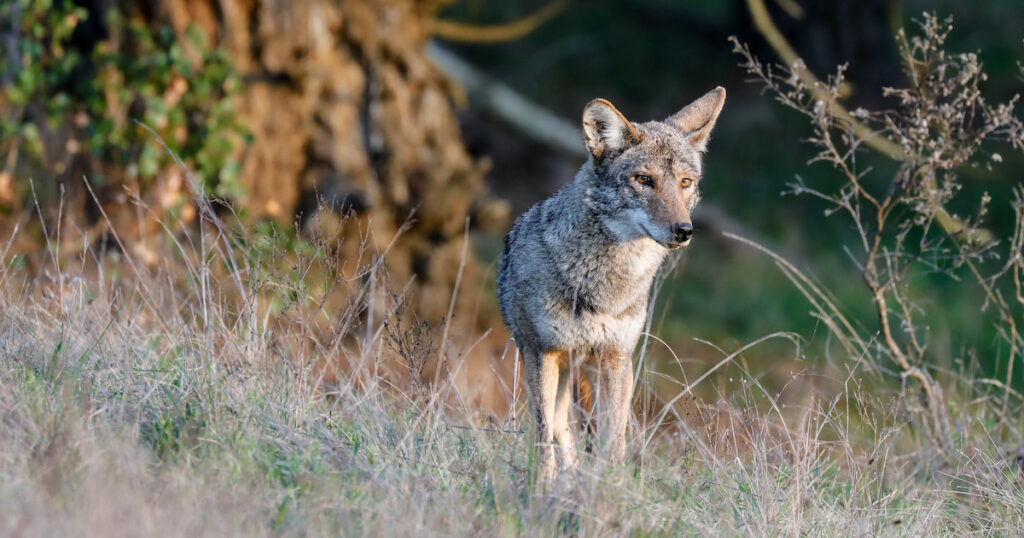Feature
Regenerative Agriculture Falls Short As a Climate Fix, New Study Finds
Research•5 min read
Reported
Wildlife killing contests are common across the U.S. Competitors kill coyotes and foxes for the thrill, often invoking the interests of the ranching industry to defend their conduct.


Words by Katie Stennes
Wildlife killing contests are a low-profile form of animal exploitation rarely seen by the general public but quite pervasive across America. Countless events like the “Shoot for the Cash Predator Bash” and the “Grand Slam Coyote Series” take place in nearly all of the 42 states where they are legal. Competitors kill for the thrill, for bragging rights, and for cash and prizes, often invoking the interests of the ranching industry to defend their conduct.
In January 2021, an undercover investigation by the Humane Society of the United States documented the aftermath of the Kanawha Valley Predator Calling Championship at a Virginia resort. Dead coyotes and foxes were piled into crates on trucks with bumper stickers reading “Yote H8R,” “Coyote Hearse,” and “Coyote Taxi.” Over the 45-hour span of the event, competitors gunned down approximately 315 animals for the chance at cash and prizes.
Participants dragged the bodies, torn apart by bullets, to a scale, where they were hung upside down for weighing as a crowd watched the distribution of prizes to the teams that had killed the most and the biggest animals. The winning two-man team killed 52 animals. A team wearing matching “Nightlife Assassins” sweatshirts congratulated each other.
A few weeks later in Texas, a contestant in the “De Leon Pharmacy and Sporting Goods’ Varmint Hunt” described the gun he used to kill the row of bloody bobcats, coyotes, foxes, and raccoons now laying at his feet. “They’re like a .22-250 on steroids,” he told an HSUS investigator, referring to his custom-built rifle. “I wouldn’t use something like that if you want to save the fur,” he said. “These [guns] are not very fur-friendly.” Nudging a dead coyote with his foot, he added, “I shot this one up here in the throat from high up and it blew out the whole bottom of his chest.” More than $3,000 in cash prizes were doled out.
There was similar carnage on display at a contest at the Williamsport Fire Department in Indiana in December 2020. The HSUS undercover footage shows firefighters helping to haul roughly 60 coyotes to the weigh station, where holes were punched in the animals’ legs to hang them from the scale. A participant told investigators that he uses AR-15 rifles with night vision to kill animals, adding, “I enjoy it.”
Such butchery can only be achieved with the use of high-tech equipment that runs into the thousands of dollars. Teams use electronic calling devices—which imitate the sounds of dependent young in distress—to lure animals into shooting range and then gun them down with AR-15-style weapons fitted with night vision and thermal imaging scopes. The animals don’t stand a chance.
Directly contradicting gold standard science in wildlife management, contestants at these events grasp at straws with their claim that killing contests provide a service to ranchers by eliminating carnivores who would otherwise prey on cattle. It’s their most common falsehood.
Randomly killing coyotes actually causes their numbers to rise. Coyotes are compensatory breeders—they reproduce more quickly due to a sudden drop in competition for resources. Indiscriminate killing disrupts their social structure, encouraging more breeding and migration, which ultimately results in more coyotes. In the face of relentless mass extermination attempts for over 150 years, coyotes have tripled their range in the United States.

Killing contests may even increase livestock losses. A recent review of studies using U.S. Department of Agriculture data found a “paradoxical relationship” between lethal control of carnivores and the number of livestock killed. To feed larger litters of pups who are born as a result of indiscriminate coyote killing, adults who normally prefer to prey on rodents are forced to switch to larger targets like sheep to survive. Killing off a non-offending coyote also allows more problematic coyotes—formerly excluded from a specific territory—to move in. Scientists have coined the term “guard coyote” to explain the phenomenon of using one coyote to stave off others.
According to USDA data, all carnivores combined—including coyotes, wolves, and cougars—are responsible for less than 0.5 percent of cattle and sheep losses in the U.S.
The predominant sources of mortality to livestock include disease, illness, birthing problems, and weather. Even free-roaming domestic dogs pose an equal or greater risk than wild carnivores. Wildlife agencies encourage the use of traditional animal husbandry practices and strategic nonlethal control methods to provide protection, with lethal control of specific, problem-causing coyotes as a last resort.
There is no good reason to mass kill carnivores. Why would you want to? Countless Americans delight in spotting the resilient, resourceful coyote in the wild—appreciating the species not only for its intrinsic value but for its ecological services. Coyotes and other top carnivores help control rodent and rabbit populations, scavenge on animal carcasses, and indirectly boost biodiversity.
When the Washington Fish and Wildlife Commission banned killing contests in the state in 2020, one commissioner called coyotes the “only free employees” on her cattle ranch and scorned contest participants who had trespassed on her property to kill them.
In recent years, a growing number of wildlife agency professionals, carnivore scientists, and hunters have condemned killing contests as unethical, counterproductive, and damaging to the reputation of hunters. The Virginia Department of Wildlife Resources stated that there is “no scientific evidence” to support claims that killing contests reduce coyote numbers or limit livestock damage. The chair of the Arizona Game and Fish Commission, also a hunter, said, “There has been a lot of social outcry against this, and you can kind of understand why. It’s difficult to stand up and defend a practice like this.”

Since 2014, eight states have outlawed wildlife killing contests and similar efforts are underway in many others. We shouldn’t let a stubborn and indifferent faction treat animals as chips in a game for cash and prizes.
Want to find out how you can help? Go here.